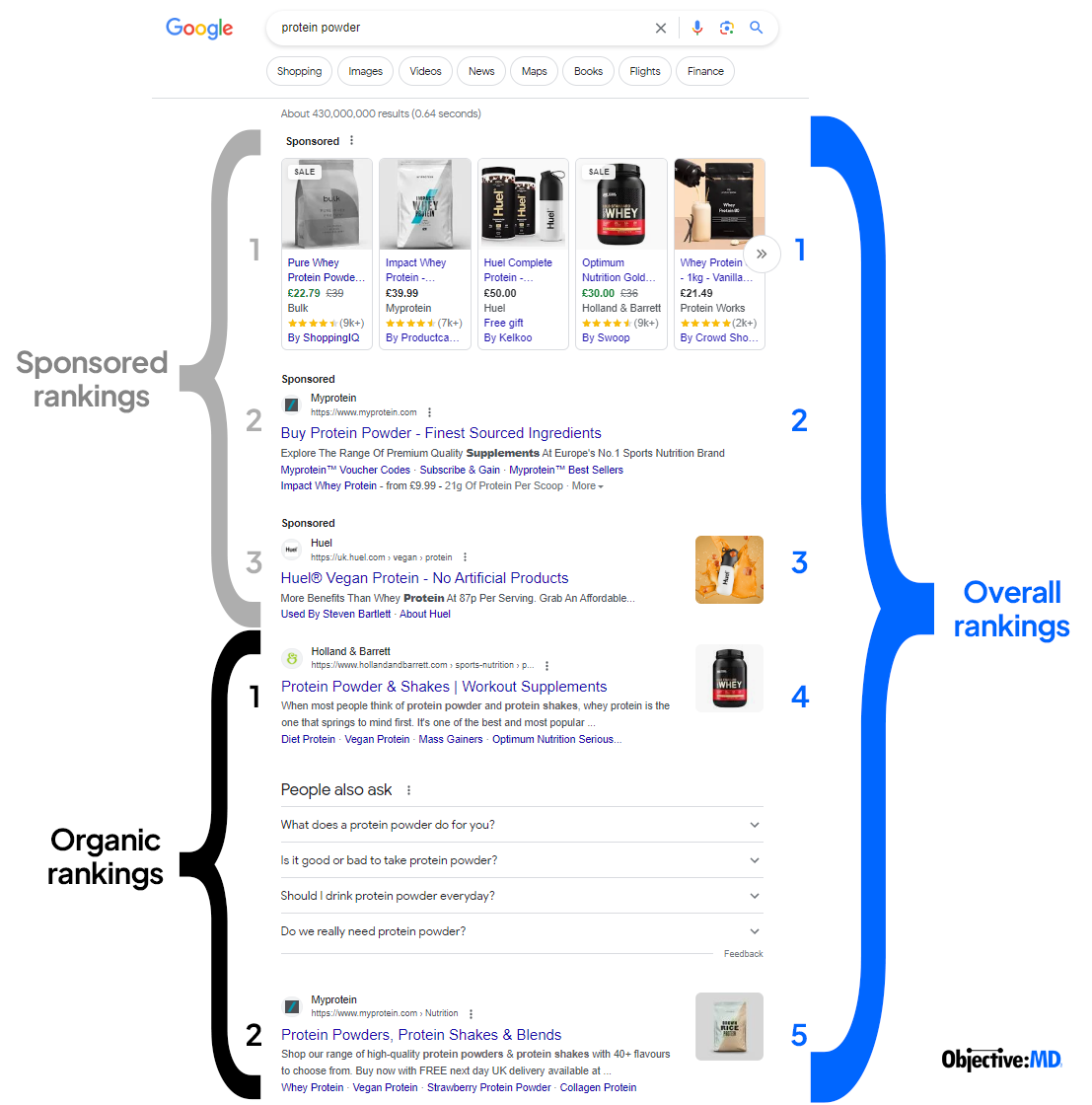
If you’re a location-based business such as a shop, store, salon, restaurant or gym, have you made it easy for first-time visitors to find you?
How about for people to notice you, even when they’re not looking for you?
While these are basic questions, they’re important because if you’re difficult to notice and find, there’s a barrier between you and potential custom. And the last thing anyone needs is unnecessary barriers to gaining more customers.
While ensuring visibility is a simple idea, achieving it can be difficult. And the longer you own a business, the more difficult it is to see things from a customer’s point of view.
What is “visibility”? And visible to who?
“Visibility” in this article means: being visible to first-time visitors and prospective customers.
Not visible to you, the business owner. Not even existing customers.
If your first-time visitors or prospective customers have trouble noticing or finding you, you have a visibility problem.
Physical and online visibility
For first-time visitors and prospective customers, being visible has two main parts:
- physical visibility;
- online visibility.
Both can be easily overlooked by the business owner. For instance, when we spoke to two sports-based businesses, both had visibility problems, namely:
- Poor physical visibility. One especially so. Both were tucked away in out-of-town locations that were difficult to find first time around, even if you had a postcode and sat nav. Parking was good in both cases, but finding the car parks was tricky. Even when you reached the postcode, there was a lack of signage so it wasn’t obvious where the shop was. And if you were at the back of either location, you would hardly notice them at all;
- While both businesses could be found easily on Google if you searched for the specific name of the business, one of them could not be found for any of the relevant category search terms a person might use. In a test, we stopped looking through the results after the fifth page. It was no better with “near me” added at the end of the search terms either. The other business fared better for category search terms, but was competing against large sports retailers like Sports Direct and JD Sports for the same search terms results;
- On Facebook, the results were good when searching using the specific name of the businesses, but less so for the category and “category + near me” search terms, where the businesses could only be found with some scrolling.
Both you and the customer suffer if there’s a lack of visibility
This is because:
- First-time customers have to spend an unnecessary amount of effort and patience just to reach you — this creates a barrier between you and the customer. If a first-time customer is arriving late for a fitness class or beauty treatment, for example, this creates a bad first-time experience. Take a fitness class: it’s hard enough to commit to that first class, never mind entering a class that has already started. And especially so for self-conscious or introverted customers. That may be enough to put them off coming back.
- Some potential customers may have already come and gone, and you never knew about it. Potential customers can pass a store, not notice it and then never think of you when it comes time to make a purchase. In other situations, like when free parking is an issue, some people give up and decide to put it off to another time. The amount of business lost will now never be known. You may have already spent money advertising to these people to get them to show an interest, only for them to be lost.
- A missed advertising opportunity to potential customers. People who know nothing about you, but could turn into a potential customer at some point in the future (when they are “in market”), are an advertising opportunity while they are out-and-about in your area. If you miss this opportunity, they may well find another business to purchase from, when the time comes.
These problems compound because of lost word-of-mouth
We know that word-of-mouth is a popular means for many small businesses to gain new customers.
Deliver a good product and service, at the right price, and you’ll get a percentage of customers talking about you to their family, friends and work colleagues. Some of these will turn into customers. But this can never happen if potential customers never noticed or found you.
Just to demonstrate how important word-of-mouth is, this what we found with one business:
How do you normally find out about new fitness classes?
- Word of mouth recommendation (24%)
- Online (21%)
- Lifestyle Fitness schedule (17%)
- Don’t look for anyone except the fitness instructor (14%)
- Instagram/Facebook (10%)
- Adverts (7%)
- Search for classes local to me (3%)
- Leisure Centre schedule (3%)
The result of word-of-mouth being a strong means of gaining new customers is that the customers that were lost because of visibility problems, or had bad experiences, will have a negative impact on growing your customer base further.
Again, the exact amount will not be known, but you can be sure it’s happening in the background, making your financial goals a little harder to hit.
To resolve your visibility problems, firstly remember you can’t experience your business as a first-time visitor anymore
To truly see how easy your business is to find by a prospective customer or first-time visitor, you have to be one. Obviously, that’s no longer possible. Not only that, the longer you’re a business owner, the harder it gets.
The good news is that you can mimic the online situation pretty well using a number of search techniques. Assessing your physical visibility is more difficult.
Checking your online visibility
You can quite quickly check your online visibility for a range of relevant search terms on Google and Facebook, two popular channels used by many UK consumers to find local products and services.
Search term types
Brand
The specific name of your business or brand. For example:
“objective:md”
“lifestyle fitness”
Brand misspells
Misspells of the specific name of your business or brand. For example:
“objectiv md”
“life style fittness”
Category
The broader category in which the business sits. For example:
“marketing consultancy”
“gym”
Category + near me
The broader category in which the business sits, plus “near me” at the end. For example:
“marketing consultancy near me”
“gym near me”
Brand terms
Starting with your highest intent-to-purchase customers first (as we advised in Moving Beyond Facebook, Instagram & Word-of-Mouth for Customer Acquisition. Our Experiences with More Effective Marketing Channels), you absolutely want to make sure the people searching specifically for your business can find you easily.
Go to google.co.uk and search using your specific business or brand name, using the combinations in the “Search Term Types” box, above. Record your sponsored, organic and overall rankings. Here’s the differences between the three:

Search for your brand terms, brand misspells, category and category + near me terms on:
- on a mobile, while you are logged into your Google account;
- on a mobile, while in incognito/private mode on the browser;
- on a desktop PC or laptop, while you are logged into your Google account;
- on a desktop PC or laptop, while in incognito/private mode on the browser.
Similarly, do the same on Facebook using these combinations:
- on a mobile in the Facebook app;
- on a desktop PC or laptop at facebook.com
For both Google and Facebook, you should appear at the top position in the organic listings (and the sponsored listings, if you are paying Google for ads). If you’re in the second position, that needs addressing. If you appear below position three, you have a problem. This is because roughly half of all clicks for search terms are on the top three positions.
Brand misspells & variations
We once worked in a business that had a Welsh name, and because it was a Welsh word, there were many — umm, what shall we say — creative ways of spelling the brand name. A frequent misspell was swapping the “C” for a “G”. Easy to do perhaps. Even some long-standing customers and suppliers got the name wrong.
You may not have a Welsh word in your name, but don’t make the mistake of assuming people will remember your brand or business name correctly. People will often not remember the exact spelling or full name of your business. They’ll remember parts of it. Google can account for some of these misspellings, but not all of them.
And don’t be tempted to be frustrated at these people — it’s your job to cater to them, not the other way around. You need to think of possible brand misspells (especially ones you’ve heard spoken) and then search for these on Google and Facebook in the same way as above.
Category searches
Category search terms are those that define the broader category that your business sits within.
If we were to take Objective:MD as an example, two relevant category searches would be “marketing consultancy” and “marketing agency”. Think of your relevant category search terms (there may be several) and record the sponsored, organic and overall rankings.
No doubt you’ll find there are many companies competing for these search terms, as they tend to be broad. If you rank highly for these terms, you’re doing well. If not, there’s a decision to be made about whether the time and effort is worth it. Or, you may need to pay Google to feature in the sponsored rankings. This will come out of a well-defined marketing strategy and marketing plan.
Category + near me searches
Online, we know a lot of people find local businesses using Google and Facebook. Some people will add “near me” onto their search term, such as “italian restaurants near me”. If Google can determine your location, it will use this to locate business in your area.
Take the same category terms you used before and add “near me” at the end (ensuring first that Google can determine your location).
Google Maps and Google My Business
You need a Google My Business listing (now called Google Business Profile) if you’re a shop, store, salon, restaurant or gym. Check it exists and accurate. Also, is there sufficient information for a first-time visitor to find you, who may not know the area so well?
Checking physical visibility
Checking your physical availability from a customer’s point of view is inherently difficult, because you know exactly where you’re located. You could probably find your own store in a snow blizzard at night, but for first time visitors, even the sat nav may not get them there.
Ask someone to take a drive to your location, giving them no travel instructions at all, using only what instructions they can find. Don’t even tell them it’s a test. Ask them about their journey when they arrive. Try your postcode and a sat nav — how close does it get you to free car parking?
Next, take a walk using a couple of different routes to get to your store, starting with the most popular routes. Make a note of what signs or clues there are to find you, or to simply just notice your store as you walk past. If it’s not obvious, you are missing an opportunity.
Lastly, ask first-time visitors when they reach your location about their experience. Summarise their response, record it and build up a pattern over time.
You need to survey local residents
If you’re visible in your local area, there should be a high percentage of people who know your store exists. Not the details of what you offer, but at least the fact you exist and what category of product or service you offer.
Asking two questions — one with no mention of the business name (“unprompted”) and one with (“prompted”) — will give a good indication of your local visibility and awareness. For instance, you could ask, “Do you know of any Thai restaurants in town?” and “Have you heard of the new Thai restaurant in town, called ‘such-and-such’?”
Recommendations for assessing your visibility
- The first recommendation is a mindset shift: to acknowledge that you are not the customer and can no longer see your business from a customer’s point of view. You’ll need to get out of your own bubble and solicit feedback from outsiders. And then take what they say seriously;
- Keep a log of the feedback and keep your eye on any themes which develop over time. You may have areas to work on;
- Next, solicit feedback from local residents to find out if they know you exist, what you offer and your location. Again, log the results and see if a pattern emerges;
- Take your research and put it all together — do you see any themes? If so, these are areas to work on;
- Check your online visibility. Check all your ranking positions on Google and Facebook for all the relevant search terms — brand, brand misspells, category, and category + “near me” searches. Desktop and mobile. Logged into Google and not logged in. Record the results;
- Check your physical availability. Do you have clear signage above your store (or, if this is not possible, temporary signage, such as an A-board)? Do you have clear signage or outside advertising that tells people where your store is, to the casual passer-by? Always make sure your signage is clean and not faded, as this gives a bad impression — that no one cares for the brand;
- Make sure your Google Maps listing is present and correct. People will use this to find your location. Is there enough info on there to get someone to free car parking?;
- Are you helping people to find you via your website? People will check your “Contact Us” or — if you have one — “Find Us” pages on your website. Or your Facebook page. Do they provide enough detail for someone visiting you for the first time? Check the sat nav — when you get to the destination, is the store and car park visible? If not, tell customers the post code for the car park. You may need to put public transport options and walk routes (if relevant) and advise where to park if parking is a problem during rush hours;
- Can a passer-by notice your store easily if they were to walk either at the front or at the back of the store?
- Do local residents have ample opportunity to notice or become aware of your business, even if they aren’t looking? For some product categories — e.g. footwear purchases — the average purchase cycle may be 6-12 months. You need to build awareness during these times, so when the time comes to make a purchase, as many prospective customers as possible think of you.
Above are just 10 recommendations to assess (and improve) your visibility to potential customers, particularly those in your local area. If you can solve your visibility problem — and most businesses have one to some extent — then you’ll make any advertising or marketing spend more efficient.



